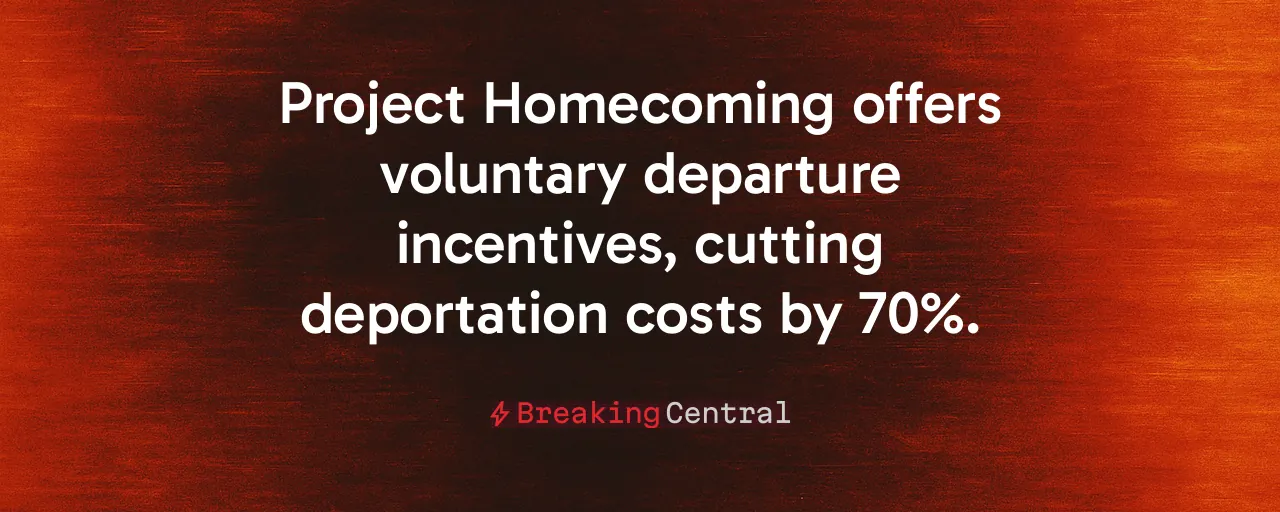A New Tool for Orderly Exits
The Department of Homeland Security recently updated its CBP Home mobile app, adding Simplified Chinese and Hindi to reach more immigrants. Launched in May 2025, the app supports President Trump's Project Homecoming, a program encouraging undocumented immigrants to leave voluntarily. This move signals a practical approach to a decades-old challenge: securing borders while providing orderly departure options.
With an estimated 11 million undocumented immigrants in the United States, the app provides a streamlined way for individuals to schedule free flights home and claim a $1,000 exit bonus. Unlike forced deportations, which cost taxpayers $17,121 per person, this initiative prioritizes cost savings and personal agency. The addition of new languages ensures broader access to these benefits.
Project Homecoming reflects a commitment to enforcing immigration laws without unnecessary hardship. By offering incentives like fine forgiveness and free travel, the program empowers individuals to make informed choices. The app's expansion underscores a focus on efficiency, reaching diverse communities with clear options for compliance.
Why Voluntary Departure Matters
Immigration enforcement has long strained public resources. Forced removals through Immigration and Customs Enforcement demand significant funding, with each case averaging over $17,000. In contrast, voluntary departures through CBP Home cost around $5,000, including flights and bonuses. This 70 percent savings could reduce federal spending by $13 billion over four years, according to estimates from the Cato Institute.
Beyond economics, voluntary departure upholds the rule of law. Staying illegally burdens social services and undermines legal immigration processes. The app's incentives encourage compliance, preserving opportunities for those who follow established pathways. Since May 2025, over 3,000 individuals have used the app to leave, with 7,000 registered, showing early success.
Historical efforts, like the 1996 immigration reforms, increased penalties for overstays, often discouraging voluntary exits. Today's approach reverses that trend, offering practical incentives. The first charter flight in May 2025 carried 64 participants, including families, demonstrating orderly departures with government support.
Balancing Compassion With Accountability
Project Homecoming prioritizes dignity for departing immigrants. Unlike detention or raids, the app allows individuals to plan their exit, avoid arrests, and maintain eligibility for future legal reentry. This balance appeals to taxpayers who value both compassion and accountability in immigration policy.
State and local law enforcement, expanded through 287(g) agreements, support federal efforts by identifying non-compliant individuals. However, the program emphasizes voluntary action first. Daily overstay fines of $998 for those who refuse incentivize participation, ensuring consequences for non-compliance without undue aggression.
Foreign governments play a critical role, coordinating travel documents for returnees. Accurate translations and biometric exit verification, now enhanced with Chinese and Hindi, ensure the process remains secure and reliable. These measures protect taxpayer funds while maintaining order.
Addressing Practical Challenges
No policy is without hurdles. Cooperation from foreign governments varies, sometimes delaying travel arrangements. Cybersecurity for the app's biometric and geolocation data remains a priority to protect user privacy. Legal questions about the $1,000 bonus's appropriation persist, though supporters argue the savings justify the expense.
Economic impacts also warrant attention. Large-scale departures could strain industries like agriculture, where undocumented labor fills critical roles. Labor economists warn of potential price increases for consumers if participation surges. Policymakers must weigh these trade-offs while prioritizing enforcement.
A Model for Future Policy
Project Homecoming offers a blueprint for immigration reform: incentivize compliance, reduce costs, and uphold laws. Its early results, with thousands departing voluntarily, suggest scalability. Expanding state partnerships and biometric verification could further streamline efforts.
The program also highlights the need for clear legal pathways. While voluntary departure addresses immediate concerns, long-term solutions require legislative action to clarify reentry rules and support legal immigration. Independent legal counseling, as some stakeholders suggest, could enhance trust in the process.
Ultimately, this initiative reflects a practical vision: secure borders, fiscal responsibility, and respect for individual choices. By leveraging technology and incentives, the United States can address immigration challenges while preserving its commitment to order and opportunity.
